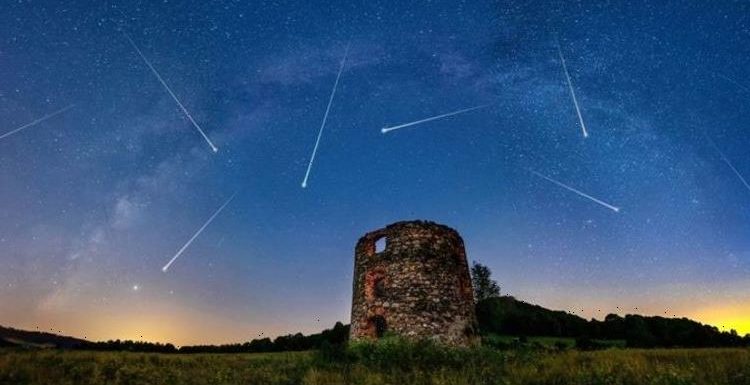
Meteor spotted in night sky over Northern Ireland
We use your sign-up to provide content in ways you’ve consented to and to improve our understanding of you. This may include adverts from us and 3rd parties based on our understanding. You can unsubscribe at any time. More info
Meteor showers light up the night sky in the UK several times a year. On November 16, the Leonids meteor shower is expected to reach its peak above the UK, delighting stargazers with up to 15 shooting stars an hour.
Keen stargazers eagerly anticipate the Leonids meteor shower, which occurs each year in November.
This stunning celestial shower is one of the most impressive of the year, with its shooting stars being famous for falling faster than in any other meteor shower in the astronomy calendar.
The shooting stars which fall in this shower travel at an estimated 44 miles per second according to Nasa.
Those keen to catch a glimpse of these stars should head south, as the Met Office has forecast rain for the north which will likely obscure the night sky.


But if you miss the Leonids display this year don’t worry, there are two other meteor showers to see before the new year.
Here’s a complete list of meteor showers to look out for in 2021.
The Geminids is the next meteor shower forecast above UK skies, according to the Royal Observatory Greenwich.
The Geminid meteor shower is one of the last of the year’s major showers.

Boasting a high number of shooting stars per hour means it can usually be relied upon for a good display, as a whopping 120 typically fall.
This shower is expected to peak on December 14, but the normal limits of the display are between December 3 to 16.
The last meteor display of 2021 is Ursids; this shower is forecast to fall between December 17 to 26 with its peak forecast between December 22 to 23.
This shower is slightly less impressive than Geminids and Leonids as fewer than ten stars typically fall every hour.

Meteor showers of 2022
The first meteor shower of 2022 has been forecast between January 3 to 4, this display is called the Lyrids.
Eta Aquarids comes next on the astronomy calendar. This shower should appear in skies above the UK between May 5 to 6.
How to watch a meteor shower
Meteors can be seen with the naked eye so there’s no need for binoculars or a telescope.
To catch the best views of meteors try to avoid light pollution where possible.
Those in rural locations without nearby buildings or street lights tend to have the clearest view of the night sky.
Allow your eyes to adjust to the dark before turning your attention to the sky.
The Royal Observatory Greenwich recommends that you don’t look directly at the radiant as this can limit the number of shooting stars you see.
They recommend looking just to the side in a dark area of the sky, as this will boost your chances of catching some meteors with long trails.
Source: Read Full Article